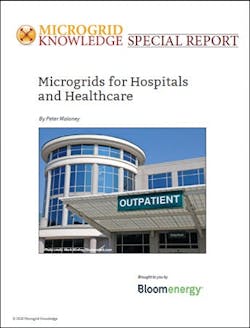Given their lifesaving and life sustaining work, hospitals cannot tolerate power outages. They require reliable energy. They also use more energy than commercial and industrial facilities of comparable size. These two factors complicate efforts at hospitals to minimize energy costs and achieve sustainability goals. Microgrids for hospitals have come front and center.
In the past, most hospitals have turned to diesel generators to provide backup power, but now they are increasingly adopting a better, cleaner option, Microgirds for hospitals.
Microgrids for hospitals are installed to ensure they’ll have electricity when a storm or other disaster disrupts the flow of utility-supplied electricity.
Microgrids also offer various around-the-clock benefits. Those that incorporate fuel cells as their generation source, for instance, can help lower a hospital’s emissions and reduce its energy costs. Most fuel cells run on natural gas, which is at historically low prices and has a cleaner emissions profile than diesel fuel.
COVID-19 has placed unprecedented strain on our hospitals, making power outages to these facilities unthinkable. Microgrid Knowledge and Bloom Energy see this as a crucial time to get the word out to the healthcare community about how microgrids can benefit their mission. So, we have prepared this special report, “The Fuel Cell Microgrid for Hospitals and Healthcare,” which is downloadable free of charge. We invite you to circulate this link widely, especially to colleagues in the healthcare arena. What is the potential of mikrogrids for hospitals? Let’s find out.
